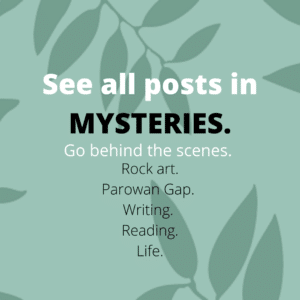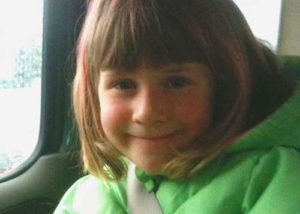[Estimated reading time: 5 minutes]
It is May 2010 and I am at a mart in south-central Utah. My rental car all gassed up, I go inside to see if there is anything interesting to buy. The night before, at a motel, I had taken my first shower after a week camping in Escalante, mostly solo. Returning to the outside world, I want to check out what is on offer. I quickly realize I need none of it.
A faded yellow tee shirt hanging on the wall does catch my eye, one with an iconic hand-with-spiral image found throughout the Southwest. I approach the teen girl standing at the register.
“Do you know where I can see petroglyphs?” I say, pointing to the tee shirt. “Somewhere off the beaten track.”
“How far can you drive?” Her cherubic face is weighing options.
“I fly out of Las Vegas in two days. Back to New York. No specific plans or timeline other than that.”
She lights up. She finds a pencil and piece of paper, writes something down and passes it to me, saying “I’ve heard good things about this place.”
In my memory of it, she may even have had a halo.
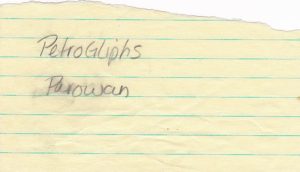
I arrive at Parowan Gap three hours later, having stopped for a picnic, then navigated a well-paved but windy, mountainous road for a spell, into a sweet little town and out the other side, across farmland, through another couple of canyons, and finally down the last straight shot. Gap Road runs right through the center of the Parowan Gap.
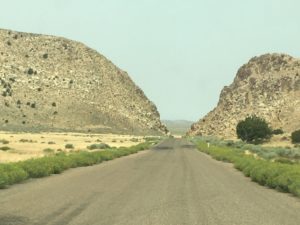
A single car sits in the small gravel parking lot to the right side of the road. I pull in, take a last greedy gulp of air conditioning, and step out into the bone-dry air that always irritates my nasal hair.
I make my way to see the petroglyphs, my boots dusting up a sensation behind me. My first thought is that I really should learn something more about petroglyphs, maybe not these but in general. Last year at Mesa Verde in Colorado, a hand print carved into a ledge above a narrow trail had stirred something inside me.
I am standing at the first panel of etchings, squinting even with sunglasses and my Mesa Verde hat. I take in a large V-shaped zipper-like image of some sort, with dots and lines and symbols, what look like two bear paw glyphs, a couple of possible anthromorphs. It is clearly intentional — and utterly inscrutable.
A plaque tells me that Parowan Gap is listed in the National Register of Historic Places. Good, I think, that means someone’s looking after it. It also says something that I would remember after as “no one really knows what the doodles mean but enjoy your visit.” The metal words seemed hardly worth the effort and materials it took to cast them.

I wander along the north side of the Gap, passing a series of rocks of all sizes, some with petroglyphs, many without. Common patterns announce themselves: ladder-like graphs, dots, striations, the occasional moon. This is not what I expected. Where are the human figures? The handprints? The animals — there are a few: an owl, bear prints, geese — but few and far between.
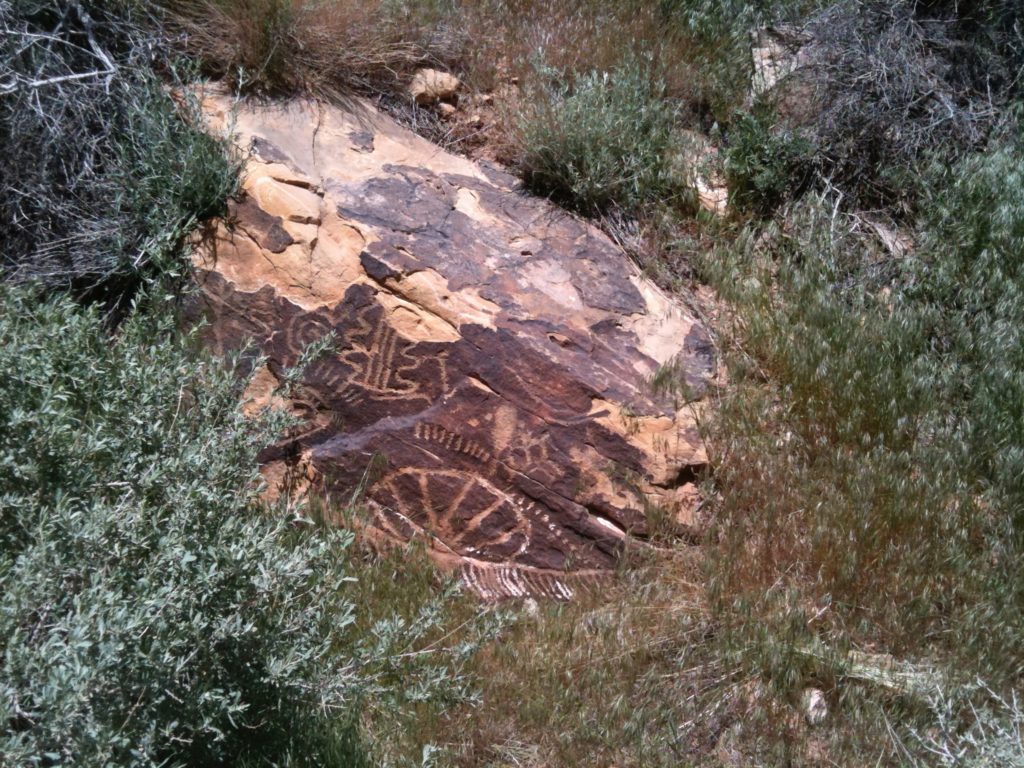
Glyphs (bear paw on top) 
Western arrival panel with geese 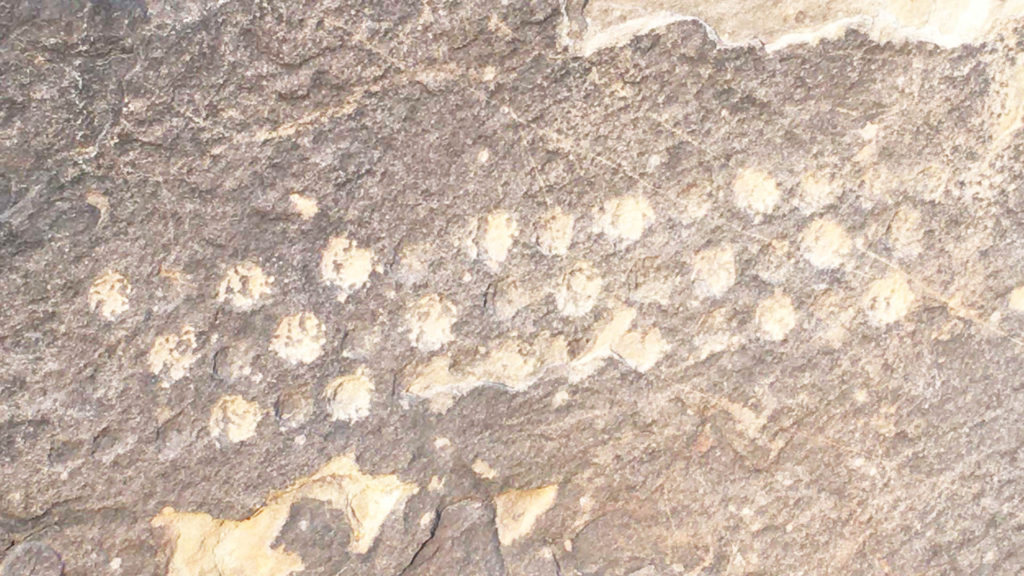
Cupoles
The place is quiet and spacious, a bubble, a moment apart from the relentless earth, sun, and sky surrounding it. The rocks set the pace. It feels ancient and slow here. An amateur, I still easily understand that these pecked marks are beautiful and clearly meant to communicate something within the context of their location and time — they were surely important to the people who made them. But the signs and symbols did not reveal their meaning easily, mostly not at all. I looked around. How old were they? What did they mean?
Across the road, I am drawn to a sun image carved from a deep spiral groove, sitting low to the ground. I pause for a moment in the shade, drink a bunch of water and wipe sweat from my face with a pink bandanna, on hand just for this purpose.
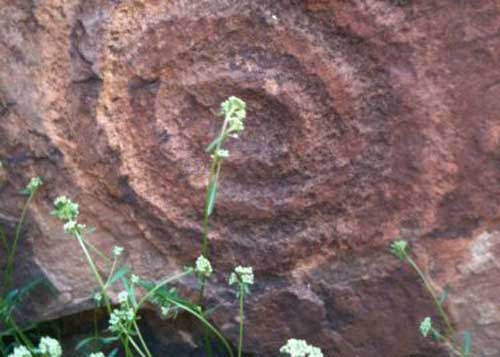
An older white man sits on a little outcropping further along. I scramble up a path overgrown with scrub brush toward the person I assume is the driver of the other car. He seems harmless. And I hadn’t had a lot of conversational companions out in the arroyos at Escalante.
“My name’s Grace.” I say, facing him, shielding my eyes with my right hand.
“Marcel,” he offers with what sounds to me like a French accent.
“Where are you from?”
“France,” he says essentially in French.
Marcel comes from the southern part of France, home to many rock-art caves, most famously Lascaux and Chauvet. As a hobby, he’d spent his life traveling the world, photographing rock art. I can’t believe my luck, pull out my notebook, and sit down.
I ask Marcel where to see the most interesting rock art in the world. Hastily jotting down his recommendations, I am thinking I would love to visit them all. I then lose track of the notebook for 10 years. It recently turned up during a storage unit clear out, a little war-torn but with the fabulous annotation next to Kimberly, Australia: “blows your mind.”

He spoke so fast, I could barely get it all down. In fact, according to an entry in a diary I also found during the great storage unit project, “He talked, talked, talked more than he listened but I got in a question and opinion or two.” I am still not sure which rock art site in Mexico “San” is the first word of.
Marcel tells me he was drawn to the uniqueness of Parowan Gap. “There is nothing else like it.”
I am struck by how important it is to protect rock art sites, to protect this rock art site. I tell him that the whole site seems so exposed and vulnerable, just sitting there on the road. In addition to the natural erosion, we had both seen the graffiti in a couple of places and noticed the empty beer can someone had thrown out of a car window — now in a plastic bag in my backpack with a few other pieces of previously strewn trash.
I drive away from Parowan, heading to a motel in St. George, about an hour south. On the open road, I hum and sing, enjoying an ease I had discovered during the solo time in Escalante. I’d gone out there to get clear on my life. I hum and sing and remember a woman I’d met in Morocco; she was researching the next book in her Roman Mystery series for middle schoolers. Humming and singing, I smile at the synchronicity of meeting Marcel. What were the chances? Is it a sign?
Two days and four diary pages later, on the plane from Las Vegas to New York, I write, “The petroglyphs/rock art speak something to me. I want to do something interesting with them. A mystery series.” I didn’t say “for young people.” That was understood.
A story was conceived that day at Parowan Gap in May 2010; something appeared from nowhere and everywhere and said “will you have me?”
I said yes.
Over the next year, characters assembled, bringing with them their own interests and concerns; a mystery presented itself, two in fact. I tugged and coaxed the threads, a storyline emerged, relationships among the characters and between the characters and the rock art got clearer. In 2012, I read archeologist Garth Norman’s book on Parowan Gap, the only one that exists. What he discovered about the Gap is nothing short of astounding — and strengthened my resolve to tell something of its story through a satisfying mystery that sparks curiosity in young minds. My truest hope is that a few of them might fall in love with rock art — and care about preserving and protecting it.
Ten years after that random encounter with the girl at the mart, I returned to the Gap. I took pages of notes and a created a little library of videos, photos, voice memos, and texts on everything I could think of needing when I got back to New York this time, ready to write. Garth (the archeologist), and his wife Cheryl generously traveled to see me at the Gap and we became instant family. Through them, I began to better understand the complex simplicity of what is recorded there. My job now, is to sit down and write it.
Writing projects take time. Big work needs space.
And there is nothing better than falling in love with a story that sticks around.
*****
Where have your stories come from?
The ones that stick, the ones you have to write.
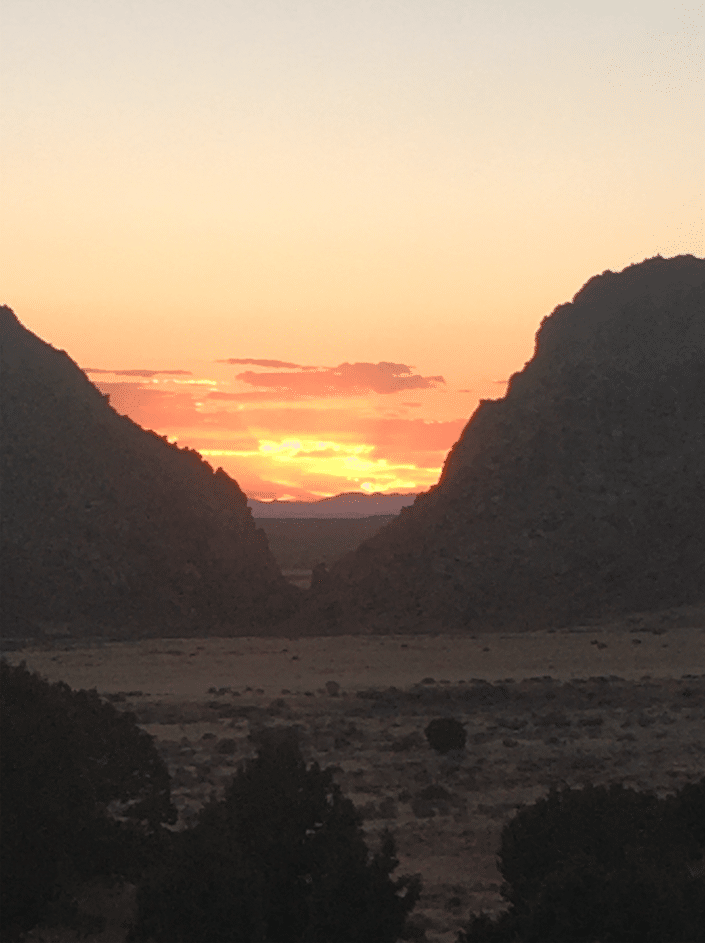
*****
- Learn a little more about Parowan Gap on Utah.com (superficial but a place to start)
- Going to be out in those parts? Definitely stop by Parowan town too. (The Visitor’s Center has great things to buy! Trust me, I’m a New Yorker.)
- Discover the Bradshaw Foundation, the world’s largest rock art nexus and a trove of inspiration
- Buy the groundbreaking book on Parowan Gap, by archeologist Garth Norman (on Amazon)

